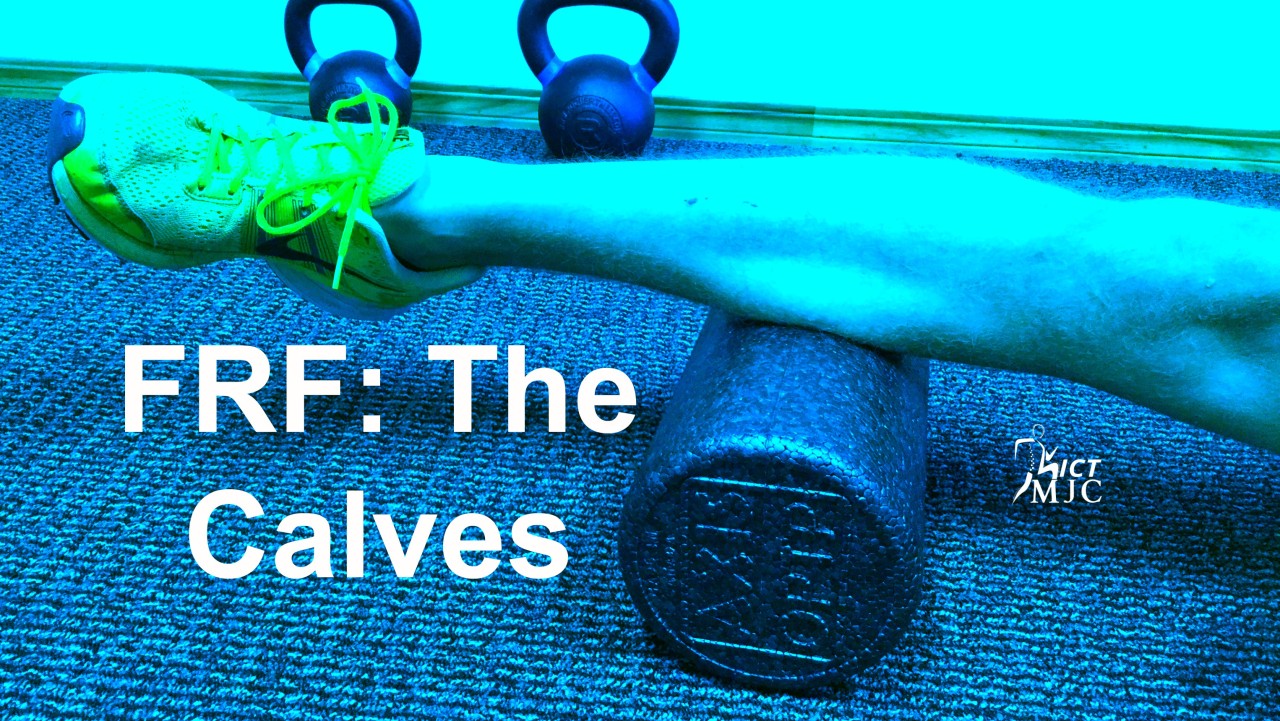Foam Rolling Friday: The Calves
Stop whatever you’re doing right now and take a second to feel your calves. Sit in a chair and cross one leg over the other. To do this correctly your calf muscles have to be on slack. Take your fingers and roll across your calf toward your shin. I can almost guarantee every single one of you will feel tension in the inside or outside of the calf, if performed correctly. If you throw your leg on a foam roller and try to foam roll your calf with the shin facing the ceiling, you will feel almost nothing and dismiss the idea that foam rolling your calves can be beneficial for you. You need to foam roll where the tension is present. If you skip this step I politely, and with all my love and sincerity, tell you that you're most likely missing out on huge benefits. End rant. Yes, I know that was a pointless rant but I do feel better getting it off my chest.
The Functional Anatomy
When talking about the function of the calf muscles, it helps to separate them into two categories: Calf muscles that cross the knee and calf muscles that don’t cross the knee. Both categories will cross the ankle so don’t worry about that. Also, we could get fancy and name every single muscle at play here, but this is a short blog, not a textbook.
There are two main calf muscles that people think of when discussing the calves: the big meaty cannon, called the gastrocnemius (aka gastroc) and the wider, deeper, soleus muscle. The gastroc crosses the knee, while the deeper soleus muscle does not. However, both join together to form the achilles tendon. Whenever you experience achilles tendonitis, there is a disturbance in how these muscles are firing and holding tension compared to one another. A third sensory muscle lays in between these muscles called the Plantaris. It's main role is to perform as a relay sensor to help control how the soleus and gastroc fire in relation to each other.
The gastroc’s and soleus’s main roles are to create and maintain relative isometric tension in the muscles so the achilles tendon can lengthen throughout the gait cycle. Isometric tension means the muscles fire only to maintain position, they will not shorten and they will not lengthen. There are calf muscles that activate by pushing the foot and toes into the ground, however, these 2 muscles primarily hold position and length to allow the achilles tendon to stretch and return energy back into the gait cycle.
The Why
The why is roughly always the same: To get out of pain and improve performance. Keep it simple. Foam rolling the calves can have huge benefits in relieving foot pain, calf pain, achilles tendinitis, knee pain, and even low back pain. This area of the body tends to hold a lot of tension and is often ignored in regards to tissue health. When trigger points and fascial adhesions are present, performance can hinder everyone from desk jockeys, runners, Crossfit athletes, figure skaters, to the weekend warrior.
For me, my why is to not become a couch potato looking back in 5 years asking myself how I got here. The deeper, and harder questions are: What do you want out of your life and what are you going to do to achieve that life? Foam rolling might be an answer, it might not be. That's for you to decide and you alone, not me, or anyone else. Being honest with yourself in who you are and what you want out of life are always the hardest things to truly identify. I believe you can do this. Find what you want and execute.
About the author
Dr. Keith Sparks is an award-winning chiropractor, functional medicine expert, and the co-founder of ICT Muscle & Joint Clinic. Dr. Sparks’ emphasis of care originated within the fields of rehabilitation, soft-tissue therapies, and chiropractic. To date, he has brought this unique combination of skills into union with functional medicine. The sole purpose of intertwining these distinct skills, knowledge, and services is to provide incomparable care to his local community. Dr. Keith Sparks is often seen in the Wichita, KS community speaking at business events and teaching health and performance classes.
